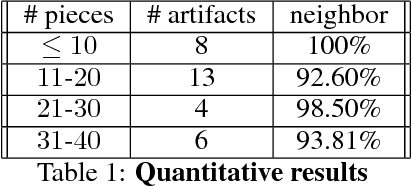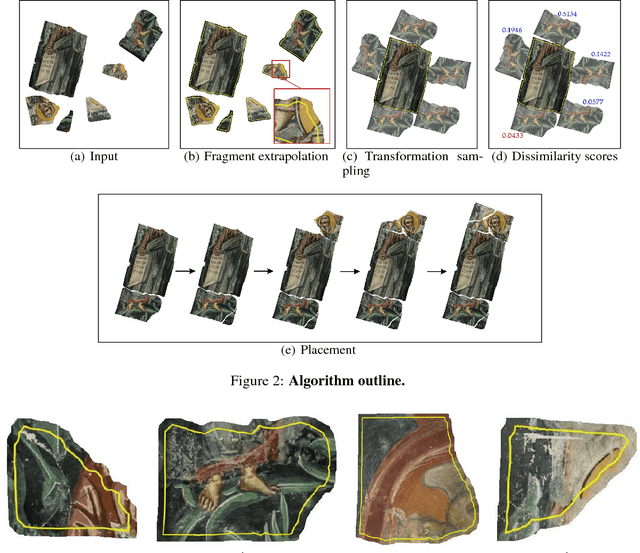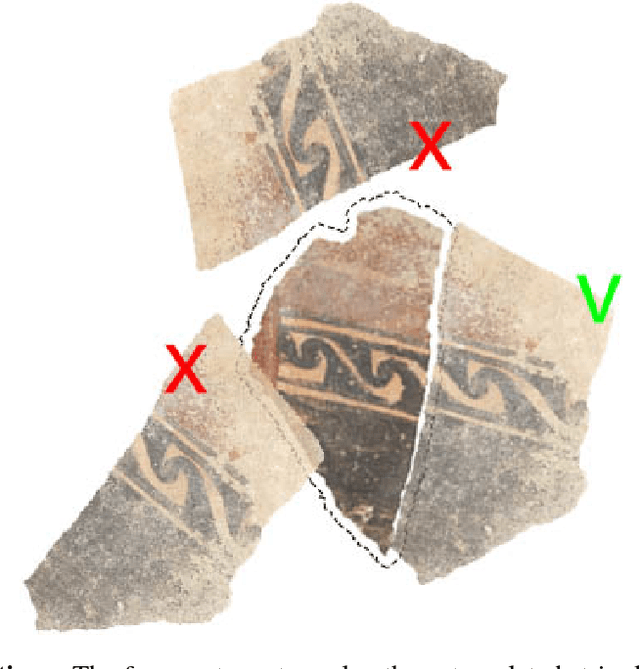Niv Derech
Solving Archaeological Puzzles
Dec 26, 2018



Abstract:Puzzle solving is a difficult problem in its own right, even when the pieces are all square and build up a natural image. But what if these ideal conditions do not hold? One such application domain is archaeology, where restoring an artifact from its fragments is highly important. From the point of view of computer vision, archaeological puzzle solving is very challenging, due to three additional difficulties: the fragments are of general shape; they are abraded, especially at the boundaries (where the strongest cues for matching should exist); and the domain of valid transformations between the pieces is continuous. The key contribution of this paper is a fully-automatic and general algorithm that addresses puzzle solving in this intriguing domain. We show that our state-of-the-art approach manages to correctly reassemble dozens of broken artifacts and frescoes.
 Add to Chrome
Add to Chrome Add to Firefox
Add to Firefox Add to Edge
Add to Edge